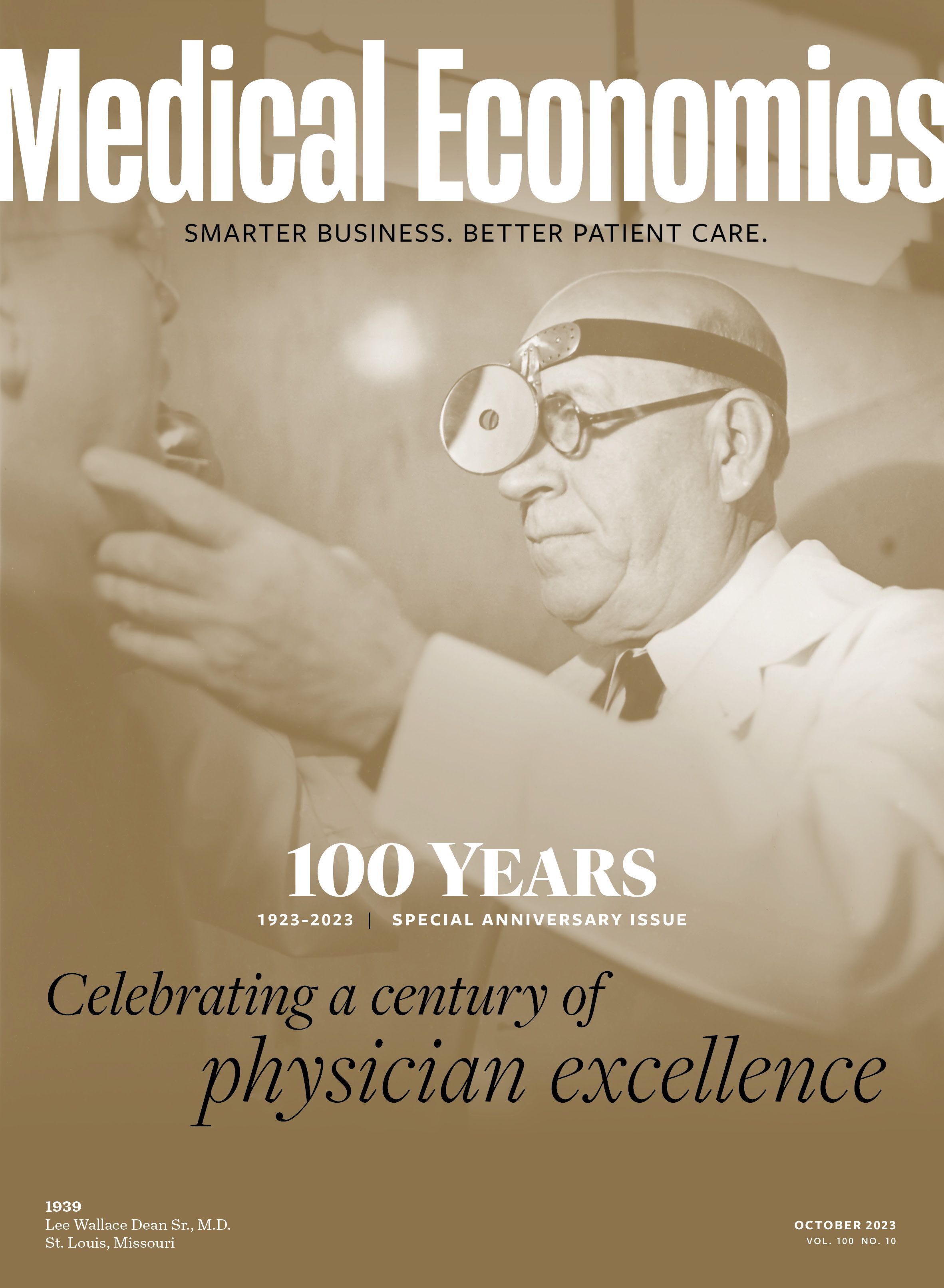Publication
Article
Medical Economics Journal
A century of primary care transformation, chapter 2: Rise of the specialists
Author(s):
Specialization is perhaps the most profound change in medical practice during the past century.
© svetazi - stock.adobe.com

Click here to read Chapter 1: 1923 vs. 2023: A doctor's daily life
Perhaps the most profound change in medical practice during the past century has been the near-complete reversal in the proportion of doctors practicing general medicine versus specialty, or proceduralist, medicine. In 1931, 84% of doctors considered themselves general practitioners (GPs), but by 1965 that proportion had fallen to 37%. By 2019, family and internal medicine practitioners — the successors to GPs — accounted for approximately 25% of active physicians in the U.S.
Meanwhile, as scientific breakthroughs and new technologies made medicine increasingly complex, the opportunities for specialization grew. A 1931 Medical Economics article listed a mere 17 specialties, but in 2023 the American Board of Medical Specialties (ABMS) lists 40 specialties and 89 subspecialties in which physicians can certify.
That growth would have surprised the founders of the ABMS when it was started in 1933, according to Joel Howell, Ph.D., M.D., a professor of history and health management and policy at the University of Michigan School of Public Health. “The specialty system was originally intended to recognize the outstanding physician. It was never designed with the idea that everyone would be a specialist,” Howell notes.
That began to change during World War II, when board-certified doctors entering the military started at higher ranks and were paid more than those lacking certification, Howell explains. That led many in the latter group to see the benefits of certification and to obtain it after the war. “That’s when you started to see specialization really take off,” Howell says.
The ranks of specialists continued to swell, and those of GPs to shrink, following the war. The 50th anniversary Medical Economics issue notes a 96% increase in the number of specialists and 13% decrease in GPs between 1938 and 1949. During that same period, it reports, the overall proportion of specialists in practice rose from 20% to 33%. By 1998, according to the 75th anniversary edition of Medical Economics, only 2% of U.S. physicians called themselves GPs.
These trends were driven to some degree by changes in society. Rising incomes and the growth of employer-sponsored health insurance, for example, enabled people to seek treatment from specialists for problems they previously would have had treated by a GP. This increased the public’s appetite for treatment by specialists — and their ability to pay for it.
Far more important, however, were the growing gaps in pay and prestige between specialists/proceduralists and their GP/primary care colleagues. Whereas specialists outearned GPs before the war, the gap gradually widened and exploded following the establishment of Medicare in 1965 and its subsequent development of a reimbursement scale based on the Relative Value Unit, which was heavily weighted toward specialists and proceduralists.
The result was that by 2011 specialists and proceduralists were earning an average of $135,000 more per year and $3.5 million more over the course of their careers than their primary care colleagues. Nearly a decade later, the 20 specialties with the highest average annual compensation were surgical and procedural, whereas the 20 lowest-compensated specialties were in primary care and pediatrics.Average compensation for family doctors and internists was $273,000 and $294,000, respectively.
In a 2011 opinion column on the KFF Health News website, health policy experts Brian Klepper, Ph.D., and David C. Kibbe, M.D., MBA, wrote, “Not surprisingly … the income disparity has driven all but the most idealistic medical students away from primary care.”
Along with the income disparity came a lessening of respect for the general practitioner and, later, the primary care physician. Frey, who began practicing in 1973, recalls, “The first decade of my practice I never felt disrespected. Most of the specialists I worked with understood what I did as a family physician. But as specialists got into ever-smaller niches, they couldn’t see how a generalist could do high-quality clinical medicine. And it’s only gotten worse over time.”
GPs responded to these trends by, essentially, rebranding into a new specialty,family medicine — a process that Timothy J. Hoff, Ph.D., describes in his book, “Searching for the Family Doctor.” GPs lobbied the ABMS to recognize family medicine as a board-certified specialty, which it did in 1969. In 1971 the American Academy of General Practice was renamed the American Academy of Family Physicians.
Around the same time, the term “general practice” began to disappear. Instead, the GPs’ services came to be called “primary care” and were provided largely by family practitioners and internists. The latter branch of medicine started in the 19th century, but it largely focused on treating hospitalized patients with rare or especially complex conditions, according to Ryan D. Mire, M.D., MACP, immediate past president of the American College of Physicians.
That began to change as internal medicine developed more subspecialties, including the hospitalist. “The hospitalist movement gives residents a clear-cut choice of which setting is most appealing,” Mire said. “The ones who preferred a more preventive role started working more in the ambulatory primary care space. Those wanting to work with more acutely ill patients could do in-patient work. The result was that by the 1970s the doctors handling outpatient primary care were family medicine and internal medicine, and that remains to this day.”
Click here to read Chapter 3: How insurance changed everything
A century of primary care transformation: Table of contents
- Introduction
- Chapter 1: 1923 vs. 2023: A doctor's daily life
- Chapter 2: Rise of the specialists
- Chapter 3: How insurance changed everything
- Chapter 4: The malpractice threat
- Chapter 5: The vanishing independent physician
- Conclusion: What the future holds
- 'Holding onto the primary care dream:' An interview with Melissa Lucarelli, M.D.




